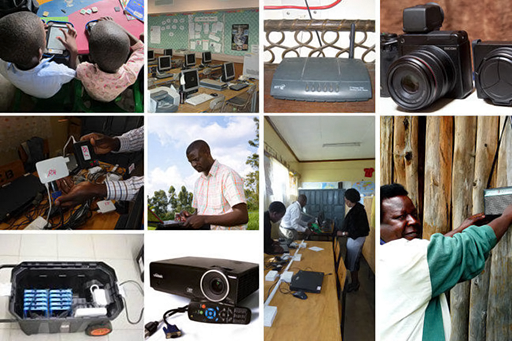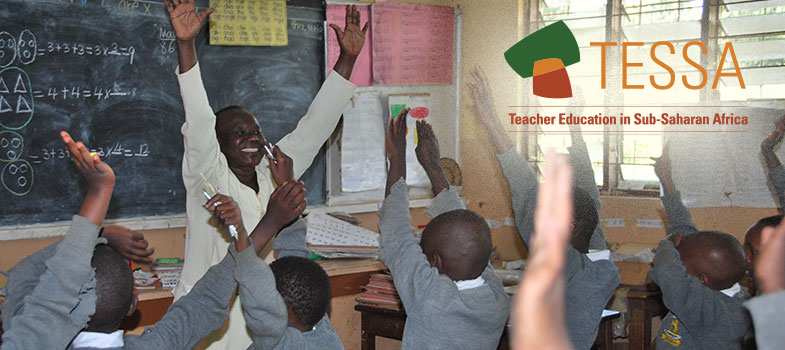Tools for the 21st century: ICT
If you read the National Policy documents for many African countries, you will see references to the power of Information Communication Technology (ICT) to support change.
The Kenya Policy document, for example, makes it clear that people in all levels of the system require skills in using and creating ICT resources, and that ICT can support learning. But what do we mean by ICT?
It is tempting to think that a well-equipped school or college will be full of computers. However, computers are expensive and require looking after. There are many cheaper forms of technology that can be just as helpful in supporting teachers and teacher educators.
Activity 1.3: Focusing on technology
The pictures below show examples of ICT equipment. What ICT do you have access to? What ICT do you use in your work? Make notes in your study notebook.

The document ‘Making the most of ICT’, available as either a Word file [Tip: hold Ctrl and click a link to open it in a new tab. (Hide tip)] or a PDF, is a table. The left-hand column gives examples of ICT that could be used to support learning. If possible, work with a colleague in your institution to fill in as much of the table as you can. It doesn’t matter if you leave most of the boxes blank; you are going to re-visit this table in Section 3.
UNESCO has produced an ICT Competency Framework for teachers which is a high-level document for policy makers and people who are concerned with organising professional development for teachers. In the next activity you will be introduced to the UNESCO ICT Competency Framework.
Activity 1.4: UNESCO ICT Competency Framework for Teachers 
Read the Executive Summary of the UNESCO ICT Competency Framework for Teachers (pp. 7–10). This course addresses ‘knowledge acquisition’ and providing tools to help you move towards ‘knowledge deepening’. Now consider the following questions and note your responses:
- How much overlap is there between the introduction to this document and your country’s policy on ICT in education?
- The grid (p. 10) provides a structure for thinking about how to integrate ICT into learning. Look at the column on ‘knowledge acquisition’. Based on your experience of working with teachers, what is the extent of their ‘knowledge’? How many of them have mobile phones, tablet computers or laptops? Do they use these in their planning and teaching?
- What are the main challenges that you face in supporting teachers in using ICT? In your study notebook, make a list of things that you need to learn. This may include specific ICT skills or pedagogical skills.
- If possible, discuss with your colleagues what use you might make of the UNESCO ICT Competency Framework in your work with pre- or in-service teachers.
Later in this course you will consider how to help student teachers to integrate ICT into their teaching and how to use ICT in your own work.
National policy



